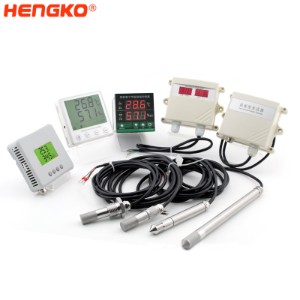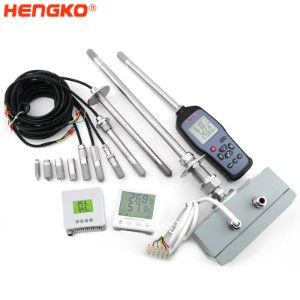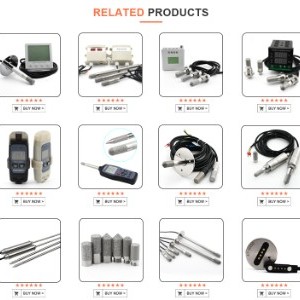The Importance of Relative Humidity Transmitters to Monitor Humidity
Just as we may feel uncomfortable in high humidity, the environment around us can be affected as well. Any business with items that may be affected by humidity, such as food, technical equipment, and other physical products, is vulnerable to its negative effects. Large companies have set up temperature and humidity monitoring systems to monitor their warehouses or workshops, using a large number of temperature and humidity sensors, temperature and humidity loggers, or temperature and humidity measuring instruments. Three reasons for monitoring indoor humidity:
I. Preservation.
Monitoring the humidity of the environment is a fundamental step in the overall preservation of the material. Excessive humidity can lead to condensation, which in turn can lead to corrosion. In addition to the obvious physical damage to the environment, corrosion can lead to electrical shorts and other secondary problems. On the same note, if the humidity is too low, static charges may build up and the added static can also cause problems with computers and electrical equipment.
II. Mold.
Mold can not only cause health problems, but it can also cause problems with the physical goods you store. We all know that controlling humidity is the key to eliminating mold and mildew. First, clean any existing mold problems, then remove the source of moisture. From there, keeping the relative humidity between 30% and 60% will control the mold so it doesn't damage your commercial property. While typical relative humidity transmitters measure 0-99.9% RH, Hengko offers a full line of outdoor relative humidity (RH) transmitters for measuring and transmitting RH levels from 0 to 100%. RH transmitters offer excellent reliability, long-term stability and fast, accurate response to humidity changes. Temperature and humidity transmitters can be easily mounted on the roof, column, or side of a building. The humidity sensor is unaffected by dust and most chemicals, and will not be damaged by condensation. The stainless steel temperature and humidity probe shield protects the sensor from solar radiation and precipitation and will not affect the performance of the temperature and humidity sensor.
III. Quality.
Humidity affects air and all materials that come into direct contact with air. Manufacturing, storage, and testing processes depend on having the proper humidity levels. Materials that must be stored when not in use can easily be damaged by improper humidity. If the moisture content rises or falls outside this range, the sterility of any medical device stored will be compromised and unfit for use. The best way to ensure proper humidity is to monitor the ambient temperature and humidity using a temperature and humidity transmitter.
IV. Businesses that could benefit from humidity monitoring.
Pharmacies: pharmacies must meet drug storage standards to ensure that all medications remain safe and effective.
Wineries: if the cellar is too dry, the cork will shrink, which loosens the seal and allows air to enter and oxidize the wine. Excessive humidity is also a problem, as it can lead to mold growth and unpleasant odors in the wine.
Storage facilities: people need to store a variety of valuable items such as electronics, antiques, and artwork. Temperature and humidity monitoring options are key selling points for storage facilities.
Restaurants/Grocery Stores: To ensure food safety for future consumption, food banks can benefit from monitoring humidity and temperature.
Nurseries: When you have a variety of plants from different environments, you must have climate control to allow the plants to thrive.



